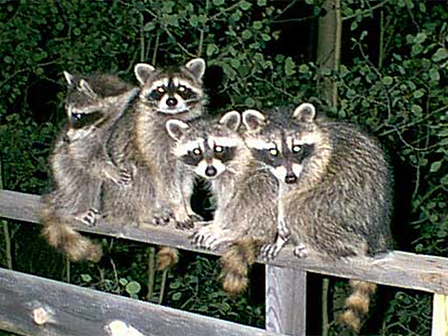Corporate Office:
20 Corporate Park Drive, Suite 150
Pembroke MA 02359
Cambridge, MA Office:
2534 Massachusetts Ave,
Cambridge, MA 02140
April 10, 2024

As spring blossoms forth with its vibrant colors and warmer temperatures, it also marks the return of various wildlife, including the mischievous raccoon. Known for their curious nature and dexterous paws, raccoons can be both fascinating and troublesome creatures, particularly when they invade our homes and properties. Understanding these masked bandits and implementing effective control measures is essential for maintaining harmony between humans and wildlife during the spring season.
Raccoons, with their distinctive black masks and ringed tails, are native to North America and are incredibly adaptable creatures. While they primarily inhabit forests and wooded areas, they are also commonly found in urban and suburban environments, scavenging for food and shelter.
During the spring months, raccoons become more active as they emerge from their winter dens in search of food and potential nesting sites. They are opportunistic omnivores, feeding on a varied diet that includes fruits, vegetables, insects, small mammals, and even garbage. As nocturnal animals, they are most active during the night, making it challenging to spot their movements.
While raccoons play a vital role in their ecosystems, their presence can sometimes lead to conflicts with humans, especially when they raid trash cans, damage property, or take up residence in attics, chimneys, or crawl spaces. Here are some effective control measures to mitigate raccoon-related issues:
As we welcome the arrival of spring and the resurgence of wildlife activity, it's essential to foster a spirit of responsible coexistence with creatures like raccoons. By understanding their habits and implementing effective control measures, we can strike a balance that ensures both human and wildlife well-being.
Contact Secured Environments and Wildlife Services to learn more about raccoon control.